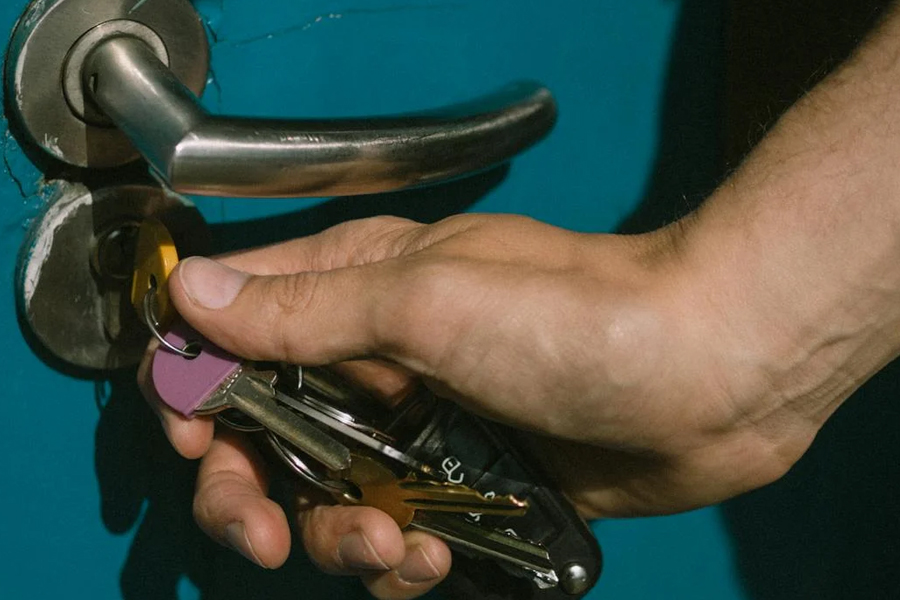How to Fix a Faulty Window Lock: A Step-by-Step Guide

Image Source: www.pexels.com
The cold, damp air seeps in through a crack in your window. The relentless rain outside, a typical day in the UK. But there’s another concern that demands your attention on this gloomy afternoon – a faulty window lock.
Defending your home goes beyond weather protection. It’s about ensuring the safety of your haven in this unpredictable world.
This guide serves as your roadmap to comprehend and address the issue directly, regardless of the type of window lock you’re handling.
Identifying the Type of Window Lock
To begin, you must familiarise yourself with your opponent. Window locks vary in shapes and sizes, each with its own unique characteristics. Whether it’s the sash lock, casement lock, or the trusty keyed lock, understanding their traits is essential.
Understanding your adversary, or in this case, your window lock type, is the key to triumph. In the realm of repairs, knowledge is power, and the essence lies in selecting the right tool for the task.
Common Problems with Window Locks
No battle is without its challenges, and a faulty window lock is no exception. Here are the adversaries you might encounter:
Stiff or Jammed Locks
Sometimes, debris or misalignment can throw your lock off balance. It’s like a stubborn door that refuses to yield.
Broken Keys in the Lock
Picture this – a broken key lodged in your lock, a predicament that can be vexing. But in this guide, we’ll reveal the tricks to safely extract that broken key and set your lock free.
Wear and Tear
The passage of time leaves its mark on everything, including your window locks. Wear and tear can take its toll, affecting the lock’s performance. Extended usage or exposure to the elements can lead to wear and tear in the internal components, such as springs or bolts.
Corrosion
Rust and corrosion act as silent intruders, threatening the integrity of your abode. Metal components, particularly those in locks, become susceptible to these issues, particularly in regions with high humidity.
Tools and Materials Needed for Repair
To confront these challenges, you’ll need the appropriate tools and materials. Think screwdrivers, pliers, lubricants – the weapons of choice in your arsenal:
- Screwdriver set – Essential for removing and securing screws on the lock components.
- Window lubricant or silicone spray – Apply this to make things run smoothly.
- Needle-nose pliers – Great for pulling out any gunk stuck or broken keys in the lock.
- Replacement screws – Keep these in case any screws go missing or get messed up.
- Cleaning cloth – Use it to give the lock a good wipe down and get rid of any dirt or grime.
- Allen wrench set – Some window locks may have Allen screws, and having a set ensures you have the right size.
- Replacement parts (if needed) – If you identify any broken or irreparable components, have replacements ready.
But remember, in this battle, choosing the right tools for your lock type is crucial. And don’t forget about safety. Ensure you emerge from the skirmish unscathed.
Step-by-Step Guide to Fixing the Lock
Fixing a malfunctioning window lock is a mission filled with twists and turns. In this section, we’ll provide a battle plan – a step-by-step guide to repairing the lock.
Be it realigning a jammed lock, replacing worn-out components, or confronting other common foes, our instructions will be your guiding light.
#1 – Identify the Problem
Begin by understanding the specific issue with your window lock. Is it sticking, misaligned, or jammed? Knowing the problem will guide your repair approach.
#2 – Inspect for Debris
Give your lock and its neighbouring areas a thorough once-over, searching for any debris, dirt, or uninvited hitchhikers causing a ruckus. For any stubborn troublemakers, rely on needle-nose pliers to delicately evict them and restore your lock’s peace of mind.
#3 – Lubricate Moving Parts
Administer a window lubricant or silicone spray to the moving parts of the lock. This diminishes friction and guarantees a more seamless operation. Always adhere to the product instructions for proper application.
#4 – Check for Misalignment
Examine the alignment of the locking components. If there’s misalignment, gently adjust the position to ensure proper engagement. Tighten or loosen screws as needed to achieve the correct alignment.
#5 – Tighten Loose Screws
Examine the lock for any screws that may have come loose. Secure them using a screwdriver. It’s important to ensure all components are tightly fastened to prevent potential malfunctions.
#6 – Test the Lock
After making adjustments and lubricating the components, test the lock’s functionality. Ensure it opens and closes smoothly without any resistance or sticking.
#7 – Replace Damaged Parts (if necessary)
If you identify any broken or irreparable components during the inspection, use the appropriate replacement parts. This may involve replacing screws, latch components, or other hardware.
#8 – Clean Surrounding Areas
Grab a cleaning cloth, and treat your lock to a spa day. Wipe away all the dirt and grime, leaving it in top-notch condition.
#9 – Apply Additional Lubricant (if needed)
If the lock continues to feel stiff, reapply the lubricant to ensure thorough coverage of all moving parts.
#10 – Final Test
Perform a final test to ensure the lock operates smoothly and securely. If the issue persists, replace the lock or consider seeking professional assistance.
When to Seek Professional Help
In the world of repairs, sometimes it’s wiser to call in the cavalry. Complex or high-security lock issues are best left to the lock replacement experts.
In situations involving high-security locks, electronic or smart lock systems, structural damage, irreparable components, security upgrades, and master key systems, seeking the expertise of a professional locksmith is advisable. Their specialised knowledge and tools are essential for handling complex window lock issues and ensuring effective, long-term solutions.
Remember, sometimes, investing in a professional can save you from long-term casualties.
Preventative Maintenance for Window Locks
The best defence is a good offence, and that holds true for your window locks. We’ll underline the importance of routine maintenance to keep future faults at bay. It’s a proactive strategy to maintain optimal security.
Regular tasks like cleaning, lubrication, and alignment checks should be part of your maintenance routine.
Conclusion
As we conclude this mission to fix your faulty window lock, remember that security is paramount in the ever-changing world we live in. Our step-by-step guide will be your trusted advisor through the operation.
Addressing a window lock issue may appear minor, but it plays a crucial role in fortifying your home. You already have the knowledge to ensure your home’s security, making every small fix a meaningful step toward peace of mind.
Lock and load – your window lock awaits your command.




